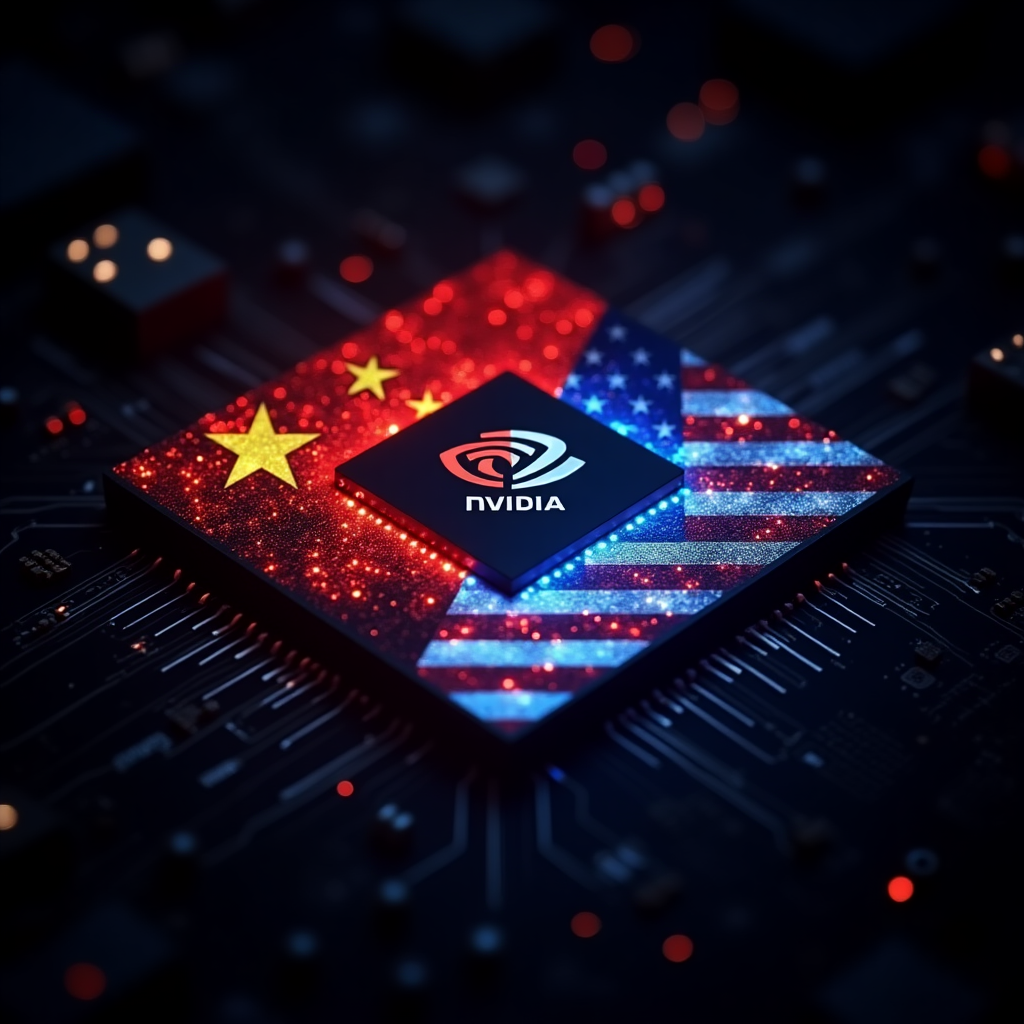Nvidia the AI Chip Giant Tangled in a Superpower Tug-of-War
A Chip That Changed the World
In a sleek glass building in Santa Clara, California, engineers sat around a boardroom table. It was the summer of 2022 and the buzz was electric. Nvidia had just hit a milestone few believed possible. Their latest AI chip had shattered records, reducing training times for massive neural networks from weeks to hours. A revolution was unfolding quietly, not in the headlines, but deep inside data centers, where silicon whispered the future.
That same week, thousands of miles away in Beijing, a different kind of buzz was growing louder. Chinese tech giants were scrambling to get their hands on Nvidia’s latest chips. These were not just processors anymore. They were instruments of global power. What began as a marvel of innovation was fast becoming a pawn in one of the fiercest geopolitical rivalries of our time.
Welcome to the story of how Nvidia became more than a tech company. It became the centerpiece of a technological arms race between the world’s two largest superpowers.
Read More: The AI Cold War: DeepSeek and OpenAI Duel for Global Dominance
The Rise of Nvidia: From Gaming Graphics to Global Dominance
Founded in 1993, Nvidia originally focused on one thing: making video games look amazing. Their graphics processing units, or GPUs, allowed gamers to experience realistic lighting, shadows, and fluid motion. But behind the gaming façade was a deeper capability. GPUs were extremely good at parallel processing, a crucial component in machine learning.
Fast forward to the 2010s, and Nvidia’s chips began powering deep learning breakthroughs. They became the secret sauce behind self-driving cars, voice assistants, recommendation engines, and more. As artificial intelligence surged into every industry, Nvidia found itself at the core of it all.
Today, Nvidia does not just make chips. It builds the backbone of modern AI. And in a world where data is power, whoever controls the fastest, smartest chips controls the future.
A Superpower Tug-of-War: The Tech Cold War
As Nvidia’s influence grew, so did global tensions. In recent years, the United States and China have been locked in a high-stakes technology rivalry. This battle is not just about economic dominance but about who leads in the next era of intelligence.
Artificial intelligence is central to national defense, economic planning, surveillance, and automation. And Nvidia’s chips are essential to training and deploying AI systems at scale.
Recognizing this, the US government began restricting the export of Nvidia’s most advanced chips to China. In 2022 and again in 2023, regulations tightened. Nvidia was forced to halt shipments of high-performance GPUs like the A100 and H100 to Chinese firms, citing national security risks.
China responded by accelerating domestic chip development, but replacing Nvidia’s level of performance remains years away. In the meantime, Chinese firms turned to workarounds, even purchasing older Nvidia chips or sourcing through foreign intermediaries.
Nvidia, caught in the middle, found itself navigating a complex web of ethics, economics, and diplomacy.

Read More: How Beautiful.ai is Turning Boring Presentations into Boardroom Blockbusters
Walking the Tightrope: Innovation vs. Regulation
Nvidia’s situation is unique. On one hand, it is an American company, bound by federal laws and regulations. On the other, China represented a huge portion of its revenue.
In 2021 alone, over 20 percent of Nvidia’s data center sales were attributed to Chinese customers. Losing that market could hinder innovation and shareholder confidence.
But the company cannot ignore the geopolitical landscape. Selling cutting-edge AI chips to rival nations could compromise US strategic interests. The result is a delicate dance where every product release, every shipment, and every partnership is scrutinized.
To adapt, Nvidia began designing chips specifically for the Chinese market that complied with export regulations but maintained competitive performance. These limited versions, such as the A800, offered a temporary solution but raised new questions about long-term security and technological parity.
The Bigger Picture: AI as a New Oil
If the 20th century was defined by a race for oil, the 21st is defined by a race for artificial intelligence. Data is the new oil, and chips like Nvidia’s are the engines that refine it.
From military simulations to disease modeling, from financial forecasting to personalized education, AI holds the key to future prosperity and power. And just as control over oil shaped geopolitics for decades, control over AI hardware is shaping a new world order.
This is why Nvidia is not just a chipmaker. It is a geopolitical asset, a symbol of technological leadership, and a wildcard in the emerging global balance of power.
Read More: Copy.ai: The Rise of the Robot Writer
Frequently Asked Questions (FAQ)
Why is Nvidia so important in the AI space?
Nvidia produces the most advanced GPUs that power AI models. Their chips allow for parallel processing of massive datasets, which is essential for training deep learning models quickly and efficiently.
What is the US government’s concern about Nvidia selling to China?
The concern is that advanced AI chips could be used by China for military applications, surveillance, or strategic technological advancements that could threaten national security.
Can China make its own version of Nvidia chips?
China is heavily investing in domestic chipmakers like SMIC and Biren Technology, but replicating Nvidia’s performance and efficiency remains a challenge. It may take years before Chinese companies can match Nvidia’s cutting-edge designs.
Is Nvidia losing business because of these restrictions?
Yes, Nvidia has lost access to a significant market, but it is also pivoting quickly by expanding into other sectors like automotive, healthcare, and sovereign cloud solutions.
Could Nvidia become a political bargaining chip?
Absolutely. With its technology at the heart of global innovation and security, Nvidia could play a role in diplomatic negotiations, similar to how oil companies have been leveraged in the past.
Conclusion: A Silicon Giant at the Center of History
Nvidia did not set out to become a player in global politics. It built better chips. But in a world increasingly defined by who leads in artificial intelligence, Nvidia has become a symbol of the future.
The company’s story is no longer just about silicon and semiconductors. It is about sovereignty, strategy, and survival in a hyperconnected world.
As the US and China continue to jostle for dominance, Nvidia remains tangled in a tug-of-war that will define not just the next decade of tech, but the future of global power.
In the end, the battle for the world’s most advanced chips may prove to be the battle for tomorrow itself.





Pingback: It’s Japan-made Flying Scooter the Next Tech Hot Cake - Newline Tech